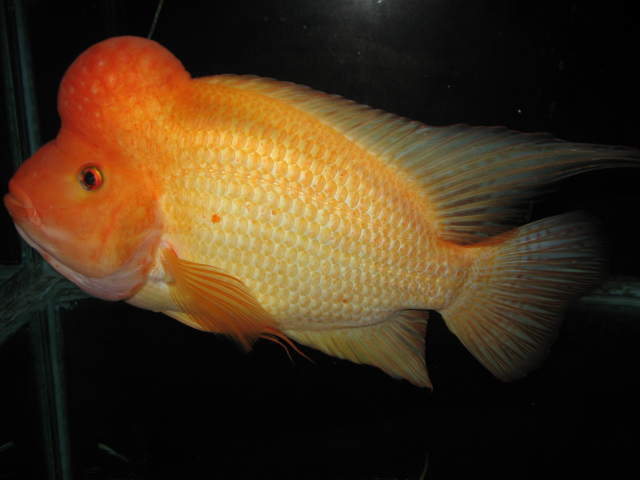I have just read
DIET, HABITAT, AND ECOMORPHOLOGY OF CICHLIDS IN THE UPPER
BLADEN RIVER, Belize by Jennifer l Cochran.
A good read once past the mistake at the start, but to me anyway the gut content was surprising for 2 of the 5 spp, A spilurus and V. maculicauda.
t salvini , p splendida, t meeki, a Robertson are the other 3.
Archocentrus spilurus was the only herbivorous cichlid species, eating mostly
filamentous algae (Fig.11 a, b.). Sixty-five stomachs were removed and dissected for
analysis of stomach contents. Algae comprised 44 % of total volume and occurred in
93.2 % of all stomachs investigated. Sand and silt detritus, vegetative and woody detritus
combined to make up 23.4 % of total volume and occurred in 89.2 %, 50.8 %, and 49.2 %
Invertebrates comprised a less significant portion of
the diet. Miscellaneous unidentified insect fragments, as well as other microfauna, made
up the remainder of the diet, however, no single item consisted of more than 2 % of the
total diet volume. Although benthic insects were not a significant part of the diet volume,
they sometimes were consumed along with algae removed from rocks, and these insects
had a high frequency of occurrence in stomachs. Insect fragments occurred in 47 %,
diatoms in 44.6 %, and cladoceran and diptera in 33.8 % of the stomachs examined.
Twenty-three V. maculicauda were preserved for diet investigation (Fig.16).
Major contributors to the total volume of stomach contents were shrimp (43.7%), leaf
fragments (22.2%) and aquatic snails (16.9%). The remaining volume consisted of fish,
crabs, invertebrate eggs, sand, and insect fragments.
Stomachs from 52 individuals of T. meeki were examined for gut contents
(Fig.15). The diet of T. meeki was dominated by aquatic snails both in terms of volume
and frequency (50.8% and 78.9%, respectively). The remaining volume was made up of
aquatic insects, difflugiids, sand, vegetative detritus
The only specialized piscivorous species of cichlid occurring in the Bladen River
is P. splendida (Fig. 13). Among the 12 adult individuals that were collected, only eight
had stomachs that contained food. Eighty-seven % of the total diet volume was fish, and
13% was comprised of shrimp
The stomachs of only three individuals of A. robertsoni were investigated
(Fig.12). These individuals were collected in the study area during December of the
previous year, and their stomachs were preserved in formalin. Although no A. robertsoni
were collected during the sampling period in 2006-2007, they are included in the present
study because they inhabit the region, albeit in low numbers (K.Winemiller, P.Esselmen,
pers.com.). In terms of volume, the diet of A. robertsoni was dominated by aquatic
insects and aquatic snails (62% and 38%, respectively).
Sixty-two stomachs of C. salvini were examined for contents (Fig. 14). Fourteen
prey categories were found, including aquatic invertebrates, difflugiids, vegetative
detritus, aquatic snails, Decapoda, Nematoda, and Hydracarina. Fifty-four % of the total
volume was made up of Ephemeroptera, Megaloptera and oligochaetes (21.1 %, 18.7%,
and 14%, respectively), and aquatic snails comprised 12.5% of the total volume.




